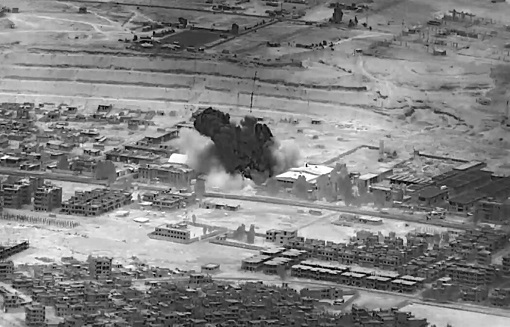The United States conducted a new round of airstrikes against facilities used by Iran and its proxies in eastern Syria late Sunday in retaliation for a spate of recent attacks against American troops, Pentagon officials said on Sunday.
Officials said the strikes most likely killed or injured an undetermined number of people at the sites.
The airstrikes appeared to be an escalation by the Biden administration, which had previously conducted two sets of strikes that officials said were meant to deter Iran’s Islamic Revolutionary Guards Corps and the militias it supports in Syria and Iraq. U.S. officials had said those strikes had caused no known casualties.
On Sunday night, Air Force F-15E fighter jets struck several buildings in Abu Kamal used for training, logistics and storing munitions, as well as a safe house in Mayadin used as a command headquarters, the officials said. The strikes came just four days after American warplanes hit a munitions warehouse in eastern Syria. Another set of retaliatory strikes by the United States came on Oct. 27.
U.S. officials blame Iran and the militias aligned with it for what has become a daily barrage of rocket and drone attacks against U.S. forces in Iraq and Syria.
But President Biden had in recent weeks rejected more aggressive bombing options proposed by the Pentagon out of fear of provoking a wider conflict with Iran. Republican critics in Congress and some air power advocates have said a narrow White House response has only invited more frequent and more dangerous attacks against U.S. troops in the region.
Pentagon and other Biden administration officials rejected that criticism on Sunday, saying that the latest American airstrikes were intended to disrupt the militias’ activities and to put their personnel at risk, not just their munitions or buildings.
“The president has no higher priority than the safety of U.S. personnel, and he directed today’s action to make clear that the United States will defend itself, its personnel and its interests,” Defense Secretary Lloyd J. Austin III said in a statement while traveling in Asia. In a news conference in Seoul on Monday, he reiterated that the United States would continue to do what was necessary to protect its troops.
Pentagon officials said that fewer than a dozen Iran-backed militia personnel were present at the bombed sites on Sunday and that some were likely to have been killed or injured in the attack. American analysts were unable to provide a more precise casualty estimate.
The Pentagon said on Sunday that there had been at least 48 attacks against U.S. forces in Syria and Iraq since Oct. 17 and that at least 56 U.S. service members had been injured. About half of them suffered traumatic brain injuries, and two had to be flown to Landstuhl military hospital in Germany for treatment.
The United States has 2,500 troops in Iraq and 900 in Syria, mostly to help local forces fight remnants of the Islamic State.
The United States has been shifting military assets to the Middle East since Hamas’s surprise attack against Israel on Oct. 7 to try to prevent a regional war that could drag U.S. forces into conflict with Iranian proxies in Lebanon, Yemen, Iraq and Syria.
It has deployed one aircraft carrier to the eastern Mediterranean near Israel, and another recently left the Red Sea and is sailing toward the Arabian Sea. The Pentagon has also sent dozens of additional warplanes to the Persian Gulf region, as well as additional Patriot antimissile batteries and other air defenses to several Gulf nations to protect U.S. troops and bases in the region.
These air defenses so far have mostly been successful in knocking down incoming threats to American military personnel, but U.S. military officials say that troops have been lucky that none have been killed as the attacks have increased.
“It is quite clear that Iran and its proxy groups are escalating against U.S. forces in Iraq and Syria, and we have a range of options at our disposal to defend ourselves,” Dana Stroul, the Pentagon’s top Middle East policy official, told a House committee last week.







